I know I am lucky to receive invites to visit lovely places. Sometimes I know the place I am visiting and sometimes it is somewhere unknown to me that turns out to be an absolute jewel. The visit to Luton Hoo Estate Walled Gardens was such a jewel.
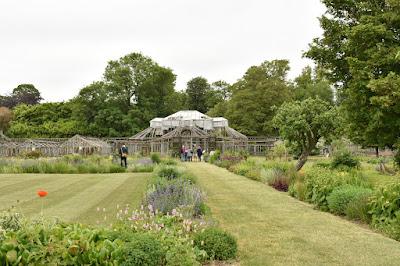
I was asked to visit as part of an event, but I have not been paid to write this nor am I under any obligation to write this.
Let's start with a bit of history: the Walled Gardens at one time were part of a larger estate that included the mansion house that is called Luton Hoo (now a hotel). Around 30 years ago the estate was divided and the Walled Gardens and area around it are not under the same ownership as the hotel. Obviously the early history of the house is directly linked to the history of the walled gardens because as you will see, the house and estate has changed hands several times and has been through many iterations.
The origins of the house are not totally clear, but there has been a house on this site for a very long time with 1455 being an early record of an already old house. This was when the 1st Baron Hoo died and the house passed to the Rotherham family. It eventually moved into the hand of John Stuart, 3rd Earl of Bute (of whom the species Stewartia are named after) who was Prime Minister briefly (1762-63) who spent a lot of time and money remodelling the house into the fashion of the day. Whilst Thomas Adam worked on the house, Capability Brown worked on the grounds. Subsequent owners remodelled and 'improved' the house until it was pretty much destroyed in a fire in 1843. In 1848 the remains of the house were bought by John Shaw Leigh and it was rebuilt again. Time moves on and the house continues to be bought and sold eventually ending up being bought by Sir Julius Wernher, who's descendents still own Luton Hoo Estate. The house is now a high quality hotel in separate ownership. The Estate is used extensively for film/tv location work. So whilst I had not been there previously, it turned out I have unknowlingly seen it a lot.
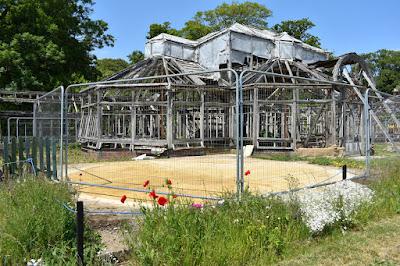
The Walled Garden is an unusual octagonal shape and was designed for Lord Bute by Capability Brown. The Walled Gardens changed with the times and through each new owner of the estate. Sir Wernher had one of the walls removed and replaced by a huge glasshouse complex built c.1911 by MacKenzie Moncur with a central fernery and six 'fingers' of glasshouses that reached out into the gardens.
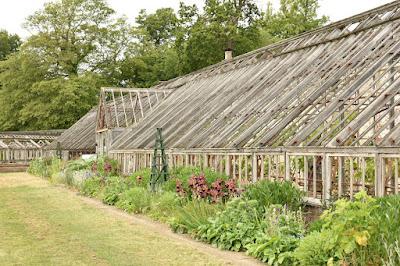
These glasshouses were in use until the 1970s but then fell into neglect. When in 2008 the project began to restore the gardens, the Estate was advised to cover the glasshouses in polythene to protect them. They still had some glass remaining in the frames at that point and the glass was carefully removed and much of it is stored. Sadly the polythene damaged the timber frames but now it is removed and restoration is happening as best it can. Even as a ruin these glasshouses are impressive.
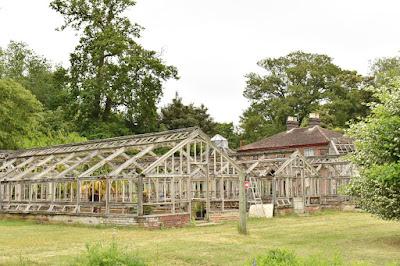
But I have leapt ahead, as whilst these fantastic structures dominate this part of the garden, they are but a part of a much bigger story. The Walled Gardens is run by a team of 120 volunteers. There is one part time paid Head Gardener but the project is led and gardened by the volunteers. This is a fantastic community project and the pride and committment to the gardens was palable. The volunteers are not only doing the gardening, they are learning the skills to make safe and maintain the structures around the garden including the brickwork and wooden frames. It is impressive.
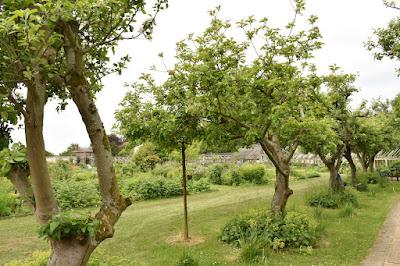
Most of what had been growing in the garden was lost during its period of neglect, but these fruit trees survived. A key part of the work of the volunteers is research into the history of the gardens. They have some historical plans, some chromographs but little else. With the Estate changing hands frequently it does not have the continuity of records that other similar estates have. They have tracked down previous gardeners who worked there is in the 1950s-60s and one has provided them with a plan from memory of what was grown where. This has inspired the team to plant more fruit trees of the varieties that were growing there previously.
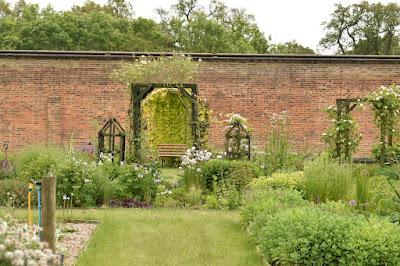
They have also researched some plant lists that show what Lord Bute was growing at the time he owned the Estate. The team have used these lists to grow the same varieties but as they have no contemporary plans they are not grown as a recreation.
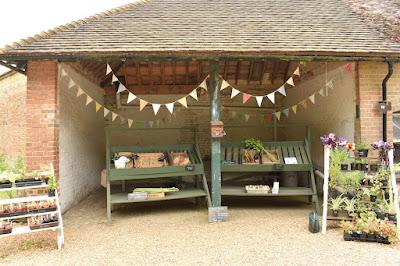
There are still the working spaces behind the Walled Garden and these are used for a variety of things, including the shop that sells plants from their nursery and veg grown in the gardens.
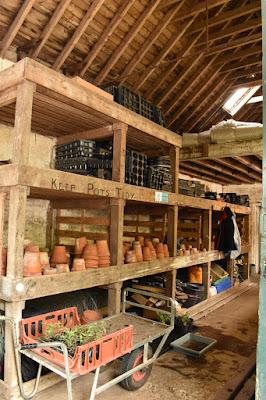
The Potting Shed is a place of dreams!

This is a vegetable washing room. If you grow that many vegetables for a large country house, you are going to need somewhere to wash them.
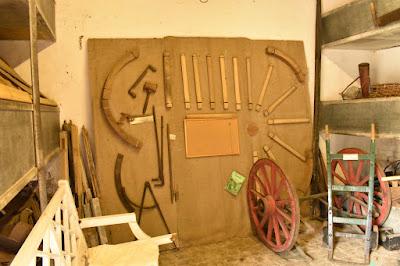
As the team began work clearing the overgrown gardens they found many 'treasures' that are now on display.
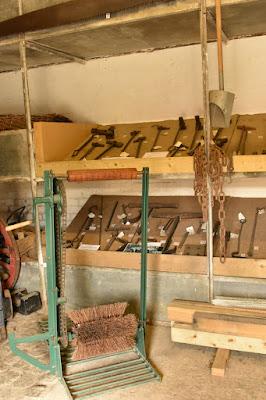
I could have poked around in here for ages if there had been the time.
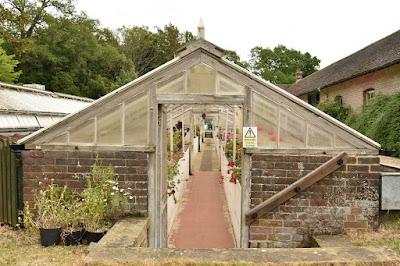
There are three smaller glasshouses around the back of the Walled Gardens and these have been restored to be in a usuable condition. This is where there is a small nursery.
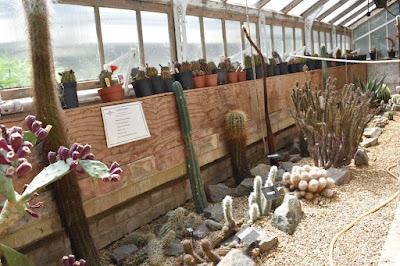
One of these glasshouses is being used as a Cactus House, I spent quite a bit of time in here.

and I spent maybe too long looking at pipes and infrastructure. The team discovered that under the glasshouses are large raintanks that collect rain and then can be pumped into the glasshouses to be used. Such a good and practical idea.
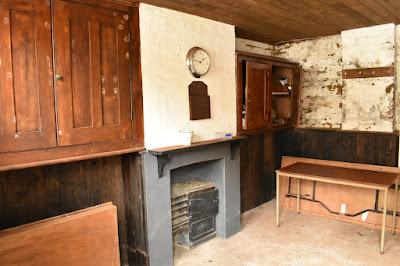
One of the benefits of neglect is that it means many things survive that might have otherwise been refashioned/updated. This room is sadly suffering from damp at the moment, but it is a view into the past.

Back in the MacKenzie Moncur glasshouse, there is this fig that is a survivor from all the years that that garden was in decline. This fig is now trained and behaving itself tied to the wall, but it had grown can completely filled the space when no one was looking after it.
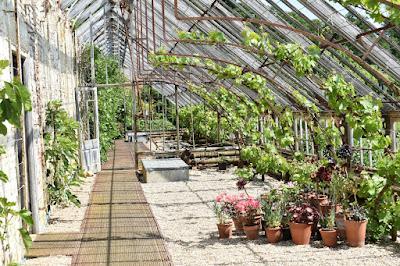
There are also vines growing again in the glasshouse. There is no glass to protect them but they are growing healthily enough.
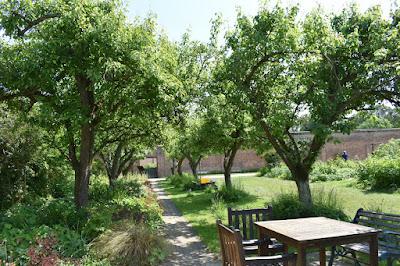
As the day progressed the sun came out and it was nice to see some shady places to sit.

and there is this new addition in the garden which is a human sundial - one where you stand in the right spot and the sun your shadow casts tells you the time. I love this sort of sundial. We were told that the garden is quite special in how its octagonal shape aligns to the sun.
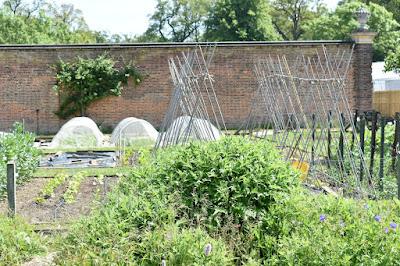
There is so much going on in the garden.
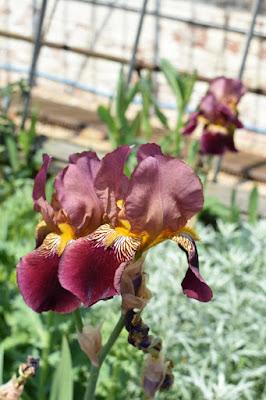
It is beautifully planted,
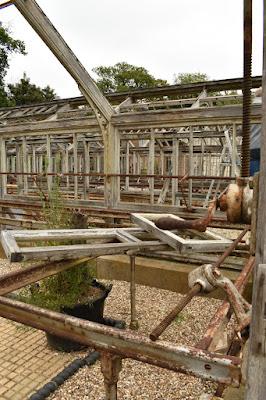
and I was fascinated by the ruined glasshouses. Here you can see part of the original flooring, but the frames of what had been slate benches. You cannot go into all of them as safety is a concern, but they give such a great insight into how these structures are made and worked.

It was such a great visit. It is the best combination of a great garden with a fascinating history and promising future. The volunteer team are dedicated and knowleable and make this place extra special.
The gardens are open to the public on Wednesdays until September 27th. You can buy tickets online or at the gate. At just over an hour from where I live I hope to return again and see how it develops through the season.

